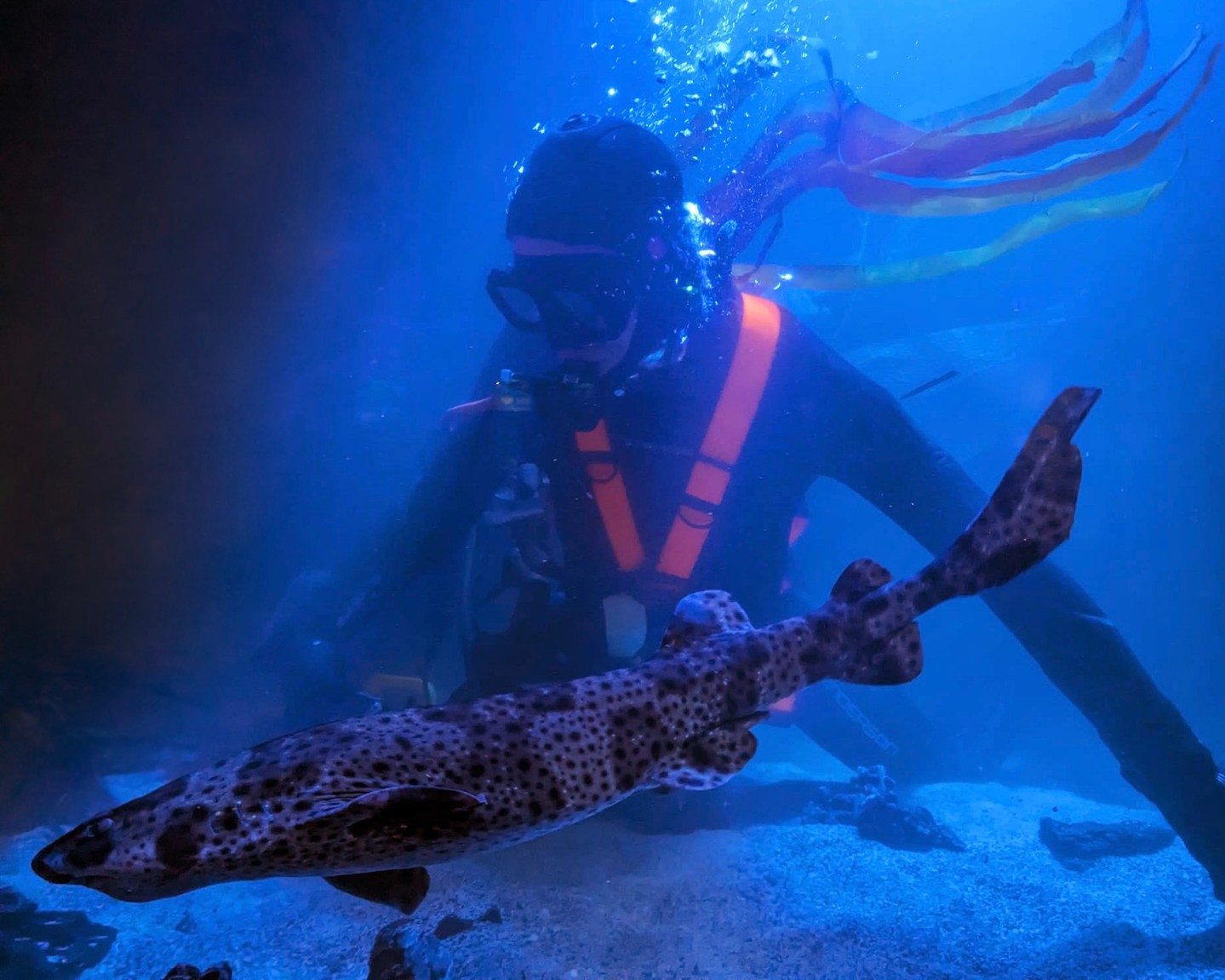- Compare the perspectives between casual observers and professional dive teams when encountering marine species.
- Provide a detailed overview of swell sharks, including behavioral and physical characteristics.
- Describe the habitat and ecological role of swell sharks within their environment.
- Discuss the importance of regular health assessments for aquatic wildlife.
- Offer conservation insights related to swell shark habitats and global marine ecosystems.
When considering marine life, the experiences of casual observers and professional dive teams diverge significantly. While beachgoers might spot a fin breaking the water’s surface or appreciate marine life through an aquarium’s glass, dive teams engage in direct interaction with oceanic ecosystems. They witness the full spectrum of behaviors and interactions that define these underwater environments. This variance in observation brings about different insights and appreciation for the species, such as the swell shark (Cephaloscyllium ventriosum). For those onshore or peering into an aquarium, these sharks might appear as passive creatures, occasionally visible as they glide effortlessly through the waters. However, for dive teams, swell sharks provide a window into complex ecological dynamics and conservation challenges.
The swell shark is an intriguing species with distinctive characteristics and fascinating behaviors. Typically, when divers encounter swell sharks, they observe not just individual habits but also group behaviors. While generally solitary, swell sharks display a peculiar habit of resting in clusters, often piled atop one another. This behavior, although seemingly communal, is primarily a space-sharing arrangement rather than a social interaction. Named for their unique defense mechanism, swell sharks can intake water or air, inflating their bodies to make themselves appear larger and more imposing when threatened. This defensive tactic deters predators, presenting a fascinating defensive adaptation in a perilous oceanic environment.
The swell shark’s natural habitat stretches across the eastern Pacific Ocean, from Monterey Bay to southern Mexico and extending to central Chile. These sharks inhabit warm-temperate to subtropical waters, often found on sandy bottoms or rocky reefs at depths reaching as much as 1,600 feet (approximately 500 meters). This environment supports their dietary habits, as they prey on a diverse array of mollusks, crustaceans, and both live and dead bony fishes. Observations from dive teams provide critical insights into these feeding practices and interactions within the food web, contributing to a deeper understanding of their ecological role.
Understanding the habits of swell sharks in their native habitats highlights the importance of regular animal health assessments, a practice maintained diligently by aquarists and animal care specialists. Routine checks on physical conditions and the presence of parasites or other health threats are essential for ensuring the well-being of marine creatures, particularly those in captivity. These health assessments are crucial for maintaining biodiversity in aquariums and understanding ecological impacts on marine fauna, as they can alert scientists to broader environmental changes affecting these species in the wild.
Conservation of swell shark habitats underscores an urgent and ongoing effort to protect marine biodiversity. Habitat degradation, pollution, and climate change pose significant threats to the ecosystems that sustain swell sharks. Dive teams play a pivotal role in this conservation work, as they collect firsthand data and engage in restoration activities. Protecting these marine environments ensures the continued survival of swell sharks and countless other species, illustrating a critical intersection of scientific exploration and proactive environmental stewardship.
The contrast between what casual observers see and what dive teams encounter is vast. Dive teams offer unique insights into the fascinating world of swell sharks, observing not only their behavioral adaptations but also the broader ecological and conservation issues they represent. Understanding these dynamics fosters a deeper appreciation and commitment to marine conservation, highlighting the vital relationship between observation and preservation in safeguarding our ocean’s future.
*****
Source Description
What we see vs what the dive team sees 🤿
@aftellemath asked to learn more about sharks 🦈 Comment an animal you’d like to learn more about!
Our aquarist, Tyler, is checking in with our swell sharks. As part of our regular animal care assessments, the husbandry team will check the physical conditions of all animals as well as look for anything that may negatively impact their health (such as parasites).
Swell sharks are generally a solitary species, but are often seen piled on top of each other while resting. Their name comes from its ability to swallow large amounts of water when threatened by a potential predator; causing their body to swell up to twice its normal size! 🫧
Swell sharks are found in warm-temperate and subtropical continental waters throughout the eastern Pacific Ocean- from Monterey Bay to southern Mexico and central Chile! These sharks have large mouths with fairly small, sharp teeth to handle larger prey. They eat mollusks, crustaceans, and bony fishes (both alive and dead)!
📸 Aquarist @kirstenwuerch
🫧
Image Description 1: A scuba diver in dark gear underwater observes a swell shark swimming over the sandy ocean floor.
Image Description 2: A close up of a swell shark resting on a sandy floor, surrounded by rocks.


